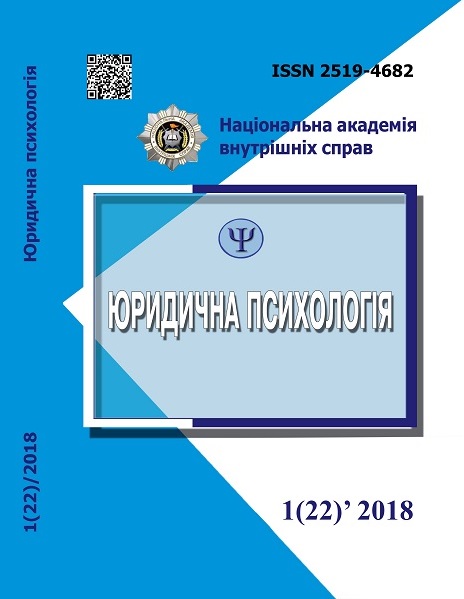Components and Structure of Psychological Readiness for Professional Activity
Abstract
The content and essence of the concept "psychological readiness for activity", which was investigated by various scholars (B. Ananiev, S. Rubinshtein, K. Platonov, V. Shyrynskyi, V. Krutetskii, S. Lybin, L. Kandybovych, M. Diachenko, V. Barco, A. Lynenko, P. Rudyk, A. Vedienov etc.).The definition of "psychological readiness" for various types of activity (professional, labor, sports, military, etc.) is considered. The problem of readiness from the point of view of different theoretical concepts: functional, personal and complex is highlighted. It is analyzed the main types of structures of psychological readiness of a person for professional activity: three-component model (V. Shalaiev, M. Lohachov, O. Ivanova, M. Tomchuk), four-component model (O. Dobrianskyi, V. Varvarov, V. Yahupov, O. Mushynska, L. Karamushka, M. Moskalov, O. Topolenko), a five-component model (M. Diachenko, L. Kandybovych), a six-component model (L. Kondrashova). Considering the structure of psychological readiness through the prism of the study – "psychological readiness of the police officer for official activities", an analysis of the above approaches is carried out and a conclusion as to the optimal component and its internal certainty is made. The four-component model is proposed for the optimal structure of psychological readiness, and the motive, cognitive, operational, and personal components are determined as the structural components of psychological readiness of the police officer for official activity. The study opens the prospects for further research of the problem of psychological readiness of the police officer for official activity. The prospective directions include: the study of general characteristics of special and extreme conditions of activity and the specifics of psychological readiness of the police officer for professional activities.
Downloads
Abstract views: 1502 PDF Downloads: 366
- Authors reserve the right to authorship of their own work and transfer to the magazine the right of the first publication of this work under the terms of the Creative Commons Attribution License, which allows other persons to freely distribute published work with mandatory reference to authors of the original work and the first publication of an article in this magazine.
- Authors have the right to enter into separate additional agreements on non-exclusive dissemination of the work in the form in which it was published in the journal (for example, to post an article in the institution's repository or to publish as part of a monograph), provided that the link to the first publication of the work in this journal is maintained.
- The journal's policy allows and encourages the posting of articles by authors on the Internet (for example, in electronic storehouses of institutions or on personal websites), both before the submission of this manuscript to the editorial office and during its editorial processing, as this contributes to the creation of a productive scientific discussion and positively affects the efficiency and dynamics of citing the published work.




